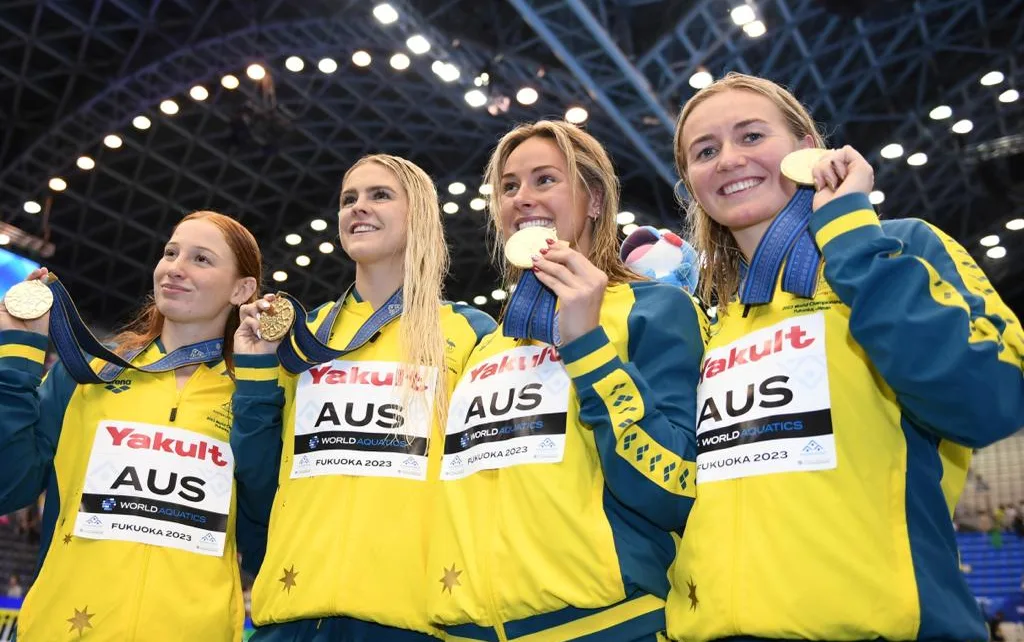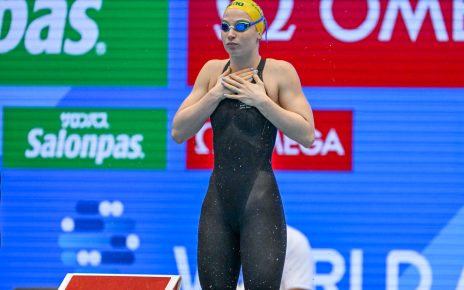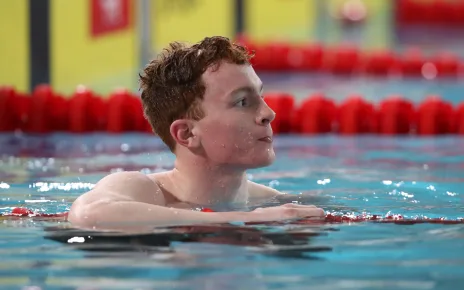The international swimming rivalry between the United States and Australia needs no introduction. The fact that Australia has unmatched depth in the women’s freestyle events also needs no introduction, but we’ll give a bit of it anyway.
At the 2023 Fukuoka World Championships, the quartet of Mollie O’Callaghan, Shayna Jack, Brianna Throssell, and Ariarne Titmus set a new world record in the 4×200 freestyle relay, destroying the previous mark by almost two seconds (7:37.50). At that same meet, O’Callaghan cracked Federica Pelligrini’s 14 year-old world record in the 200 free (1:52.85).
Just under a year later, O’Callaghan did it again at Australian Trials, but this time Titmus beat her to it. Adding up the top four times from that field results in a projected relay ceiling of 7:36.02, which would once again shatter the world record time by over a second.
Women’s 200 Free Top 8 – 2024 Australian Trials:
- Ariarne Titmus – 1:52.23 World Record
- Mollie O’Callaghan – 1:52.48
- Lani Pallister – 1:55.57
- Brianna Throssell – 1:55.74
- Shayna Jack/Jamie Perkins – 1:56.22
- –
- Brittany Castelluzzo – 1:56.77
- Meg Harris – 1:56.93
Meanwhile, at the most cutthroat Trials meet in the world, the U.S. has struggled to find the same speed. Katie Ledecky made it three in a row, also having won the event at 2016 and 2021 Trials, but she was the only athlete to break 1:56 in that final.
Women’s 200 Free Top 8 – 2024 U.S. Trials:
- Katie Ledecky – 1:55.22
- Claire Weinstein – 1:56.18
- Paige Madden – 1:56.36
- Erin Gemmell – 1:56.75
- Anna Peplowski – 1:57.04
- Alex Shackell – 1:57.05
- Simone Manuel – 1:57.13
- Katie Grimes – 1:57.33
We noticed a stark difference in how the American women and Australian women approach this race as a whole, beyond the disparity in times. Let’s dive in.
This graph may seem overwhelming at first, but we’ll walk through how to best use it alongside our analysis.
The TL;DR of the matter is: the Australian women rely on strong closing splits, while the American women rely on early speed. Remember that a dip in the graph means a swimmer is getting faster, as it corresponds to a lower time.
This is of course an oversimplification, but even with a limited data pool of eight finalists* per nation, the trend is pretty easy to spot.
For instance, take a look at Lani Pallister versus Katie Ledecky. Both athletes swim up to the 1500, so at the surface level you can expect they have similar training bases. However, Pallister’s last three 50 splits have a delta of 0.34 seconds, while Ledecky’s is 1.24. If you select both athletes on the Flourish graph, you can see how Pallister hits her pace on the 2nd 50 and holds it, while Ledecky ascends into the 3rd 50 and then roughly matches it.
Another interesting comparison point is Shayna Jack and Paige Madden. Jack qualified for Paris individually in the 50 and 100 free, while Madden qualified in the 400 and 800 free. (Madden will also likely swim the 200 free individually following Ledecky’s expected withdrawal.) You might expect the athlete who trends towards the sprint events to employ more of a “fly and die” strategy, but in fact the opposite is the case. Jack actually descends her 2nd 100, while Madden’s splits only ascend as the race goes on.
Two exceptions on the American side are Katie Grimes and Erin Gemmell, whose graphs look similar to Meg Harris or Jamie Perkins with a peak at the 3rd 50. In fact, Gemmell has the narrowest delta of the American women across her last three 50 splits.
There are 120 unique pairs we could possibly discuss when comparing these 16 athletes, so call attention to any other interesting ones you find in the comments below.
To close, we wanted to answer a hypothetical: what would we expect a race between an American and Australian athlete to look like? We found the average splits for each field and, to make it fun, normalized them around Ariarne Titmus‘ new world record (1:52.23). Check out the visualization below:
The takeaway here is Titmus’ backhalf is something to be feared. In the visualization, she doesn’t pull even with either of the hypothetical swimmers until the final 50.
Going off of times, it seems likely Australian will easily notch a 1-2 finish in the individual 200 free in Paris, and dominate the field in the 800 free relay. But if those races happens to be close, the difference in strategies promises to keep it exciting.
—
*Erin Gemmell‘s splits from her finals swim are unavailable, so we used her semifinals swim instead.




